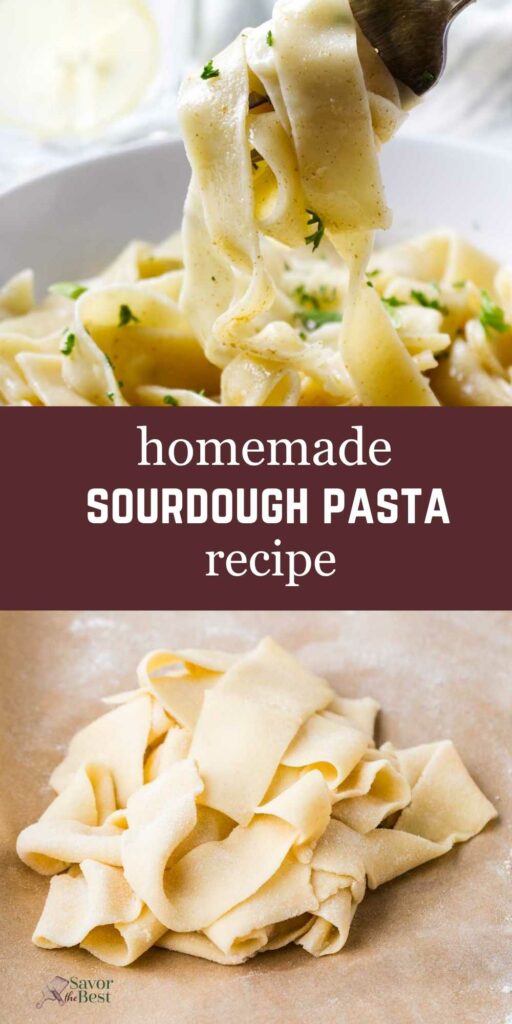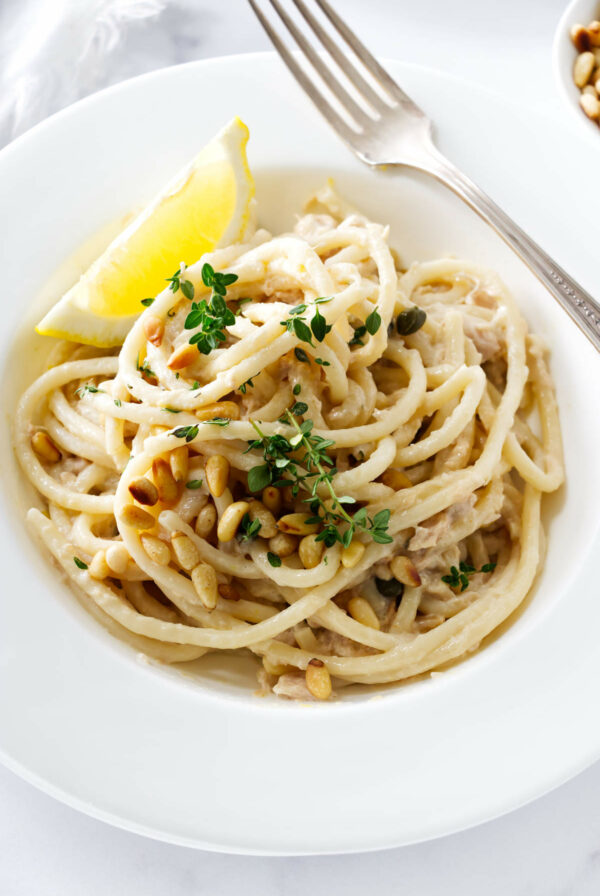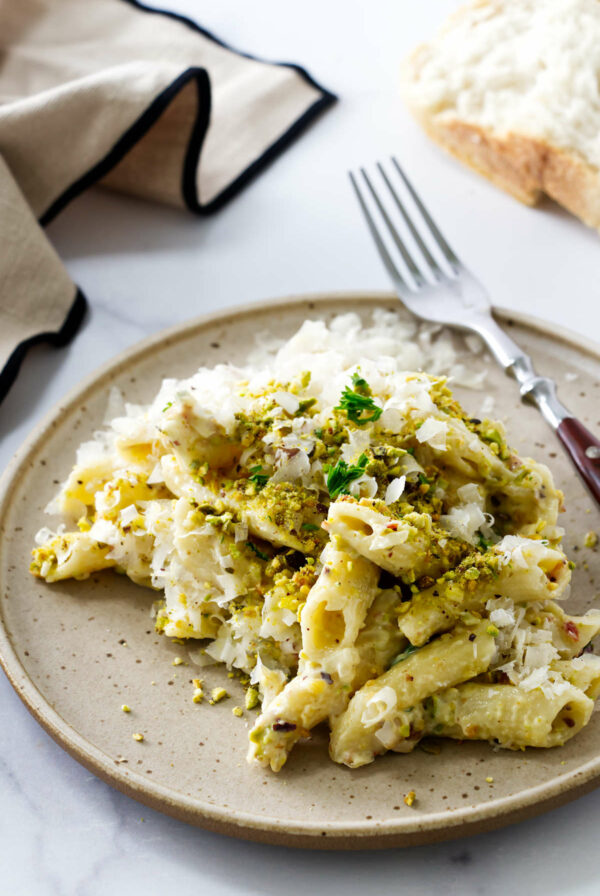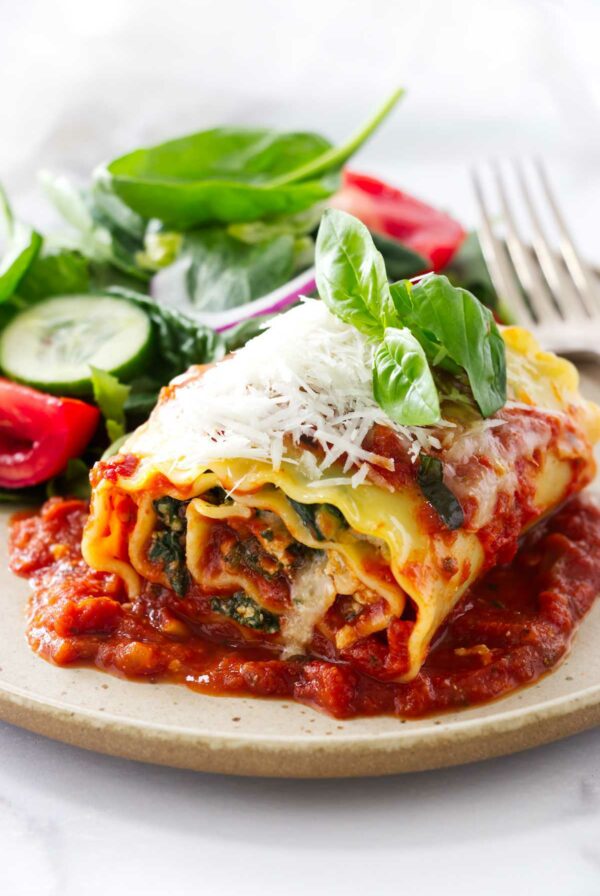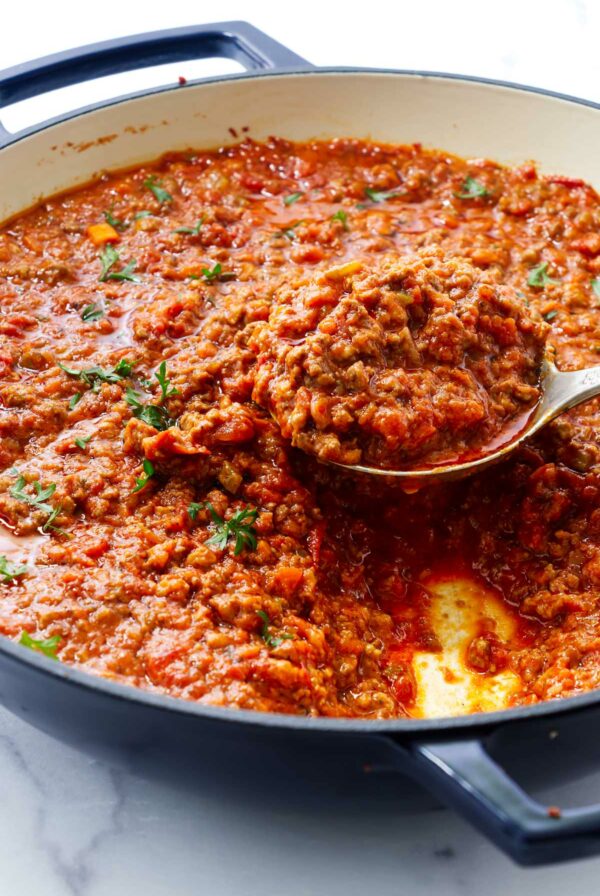This post may contain affiliate links. Please read our disclosure policy. As an Amazon Associate, I earn from qualifying purchases.
Homemade sourdough pasta is way more flavorful than anything from a box. The sourdough discard adds a light tang and gives the dough that smooth, elastic feel that makes it easy to roll, even without fancy flours or gear.
It’s also a great way to use up extra starter. Just mix, knead, roll, and slice, then boil for a couple of minutes and you’ve got fresh pasta.
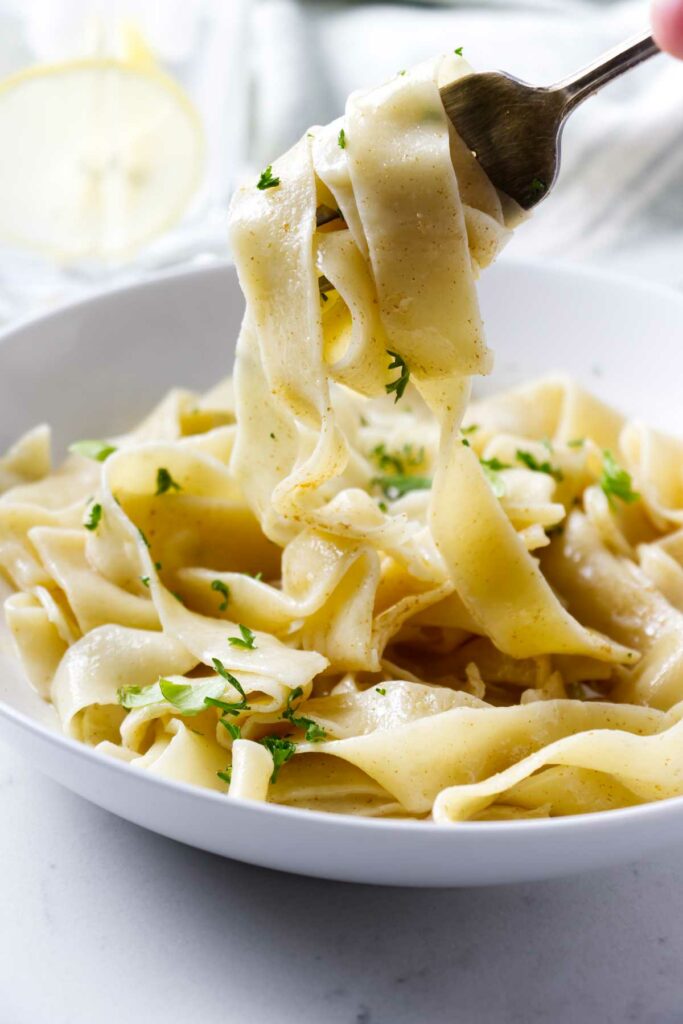
This sourdough pasta makes a great base for my tuna pasta recipe.
Here’s Why This Sourdough Pasta Recipe Works
Sourdough discard adds structure and flavor: The starter gives the dough elasticity and a gentle tang without requiring a full rise.
Flexible hydration makes it foolproof: You can easily adjust the water or flour to match your starter’s thickness or your egg yolk size.
No fancy equipment needed: A bench scraper and rolling pin are plenty; a food processor is optional.
Quick to cook and easy to freeze: Fresh pasta boils in minutes and stores well for future dinners.
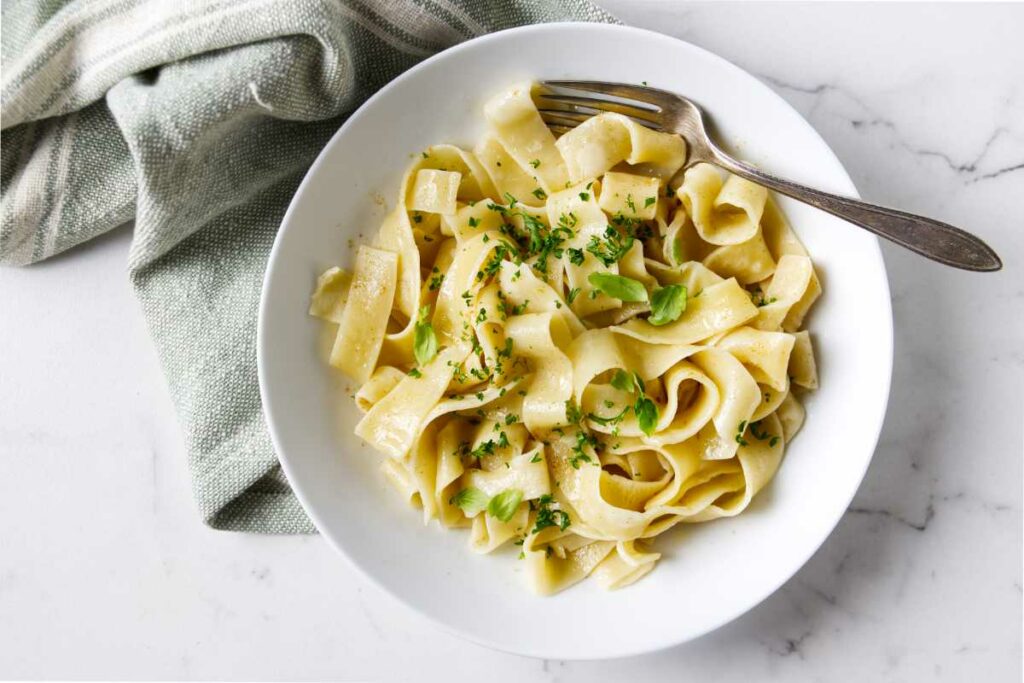
Craving something nuttier? Try my einkorn pasta recipe next. It’s rich, rustic, and made for hand-cut ribbons.
Recipe Tips
Start with less water: Egg yolks vary, and so does discard. Add water gradually to avoid sticky dough.
Don’t rush the knead: Pasta dough needs a full 8–10 minutes to develop strength. It should feel firm but not dry.
Rest the dough: This step is non-negotiable. It relaxes the gluten and makes rolling easier.
Adjust thickness for the shape: For ribbons like tagliatelle or fettuccine, roll it thin but still sturdy enough to handle without tearing. For shapes like lasagna or pappardelle, a slightly thicker sheet gives better bite and structure.
Cook in small batches: Fresh noodles stick easily and crowding the pot makes it worse. Stir gently and cook briefly, just until al dente.
Use a bench scraper early on: When mixing the dough, a bench scraper is your best friend. It helps chop and gather the shaggy bits without over-hydrating the dough too soon.
Let the dough rest often: If the dough resists rolling or snaps back, give it 1–2 minutes to relax.
Salt your pasta water: Fresh pasta is delicate and quick to cook, so seasoning the water is your main shot at building flavor before the sauce.
Try using this fresh pasta recipe to make my pasta with black truffle sauce.
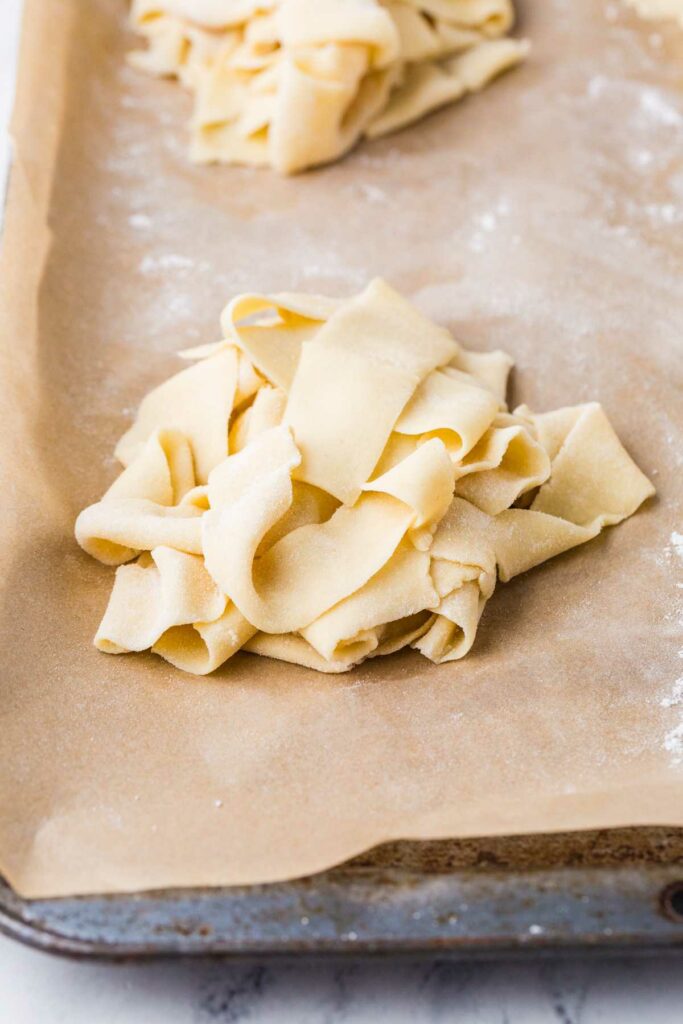
Too much discard? My sourdough zucchini fritters turn that extra starter into crisp, savory pancakes.
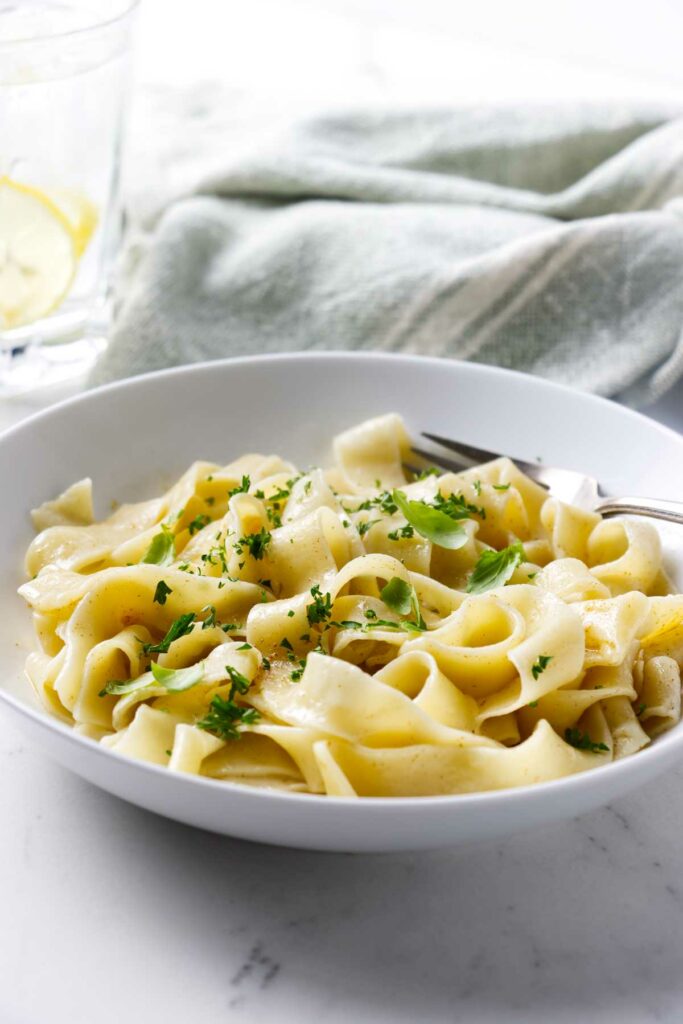
Sourdough Discard Pasta
Sourdough discard has met its most elegant fate. This homemade pasta is simple, satisfying, and endlessly versatile. Cut it thick or thin, pair it with butter or Bolognese sauce. It’s the kind of recipe that turns a humble starter into something dinner-worthy.
Pin this now to find it later!
Pin It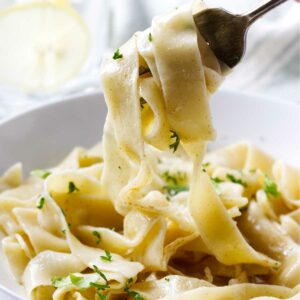
Sourdough Pasta Dough
If you make this recipe, please leave a star rating and comment.
Ingredients
- 2 cups all-purpose flour, or 00 flour, 240 grams
- 1 teaspoon salt
- 1 cup sourdough starter, fed or unfed, 240 grams
- 2 large egg yolks
- 4 teaspoons olive oil
- 3 to 10 teaspoons water
Instructions
- On a clean work surface or in a bowl, mound the flour and sprinkle in the salt. Make a well in the center and add the sourdough discard, egg yolks, olive oil, and 3 to 4 teaspoons of water.
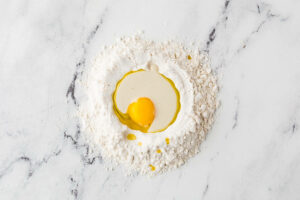
- Use a fork to gradually pull flour into the center. The mixture will look dry and crumbly at first, that’s normal.If you started mixing in a bowl, dump everything onto the counter. Use a bench scraper in a chopping and scraping motion to pull the dry bits back into the dough. Chop, scrape, and gather repeatedly. You’re not kneading yet, just coaxing the flour and liquid together.
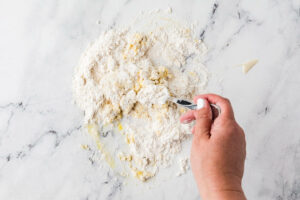
- Once the dough starts clumping into rough pieces, press them together with your hands to form a shaggy mass. If it refuses to hold together, add water 1 teaspoon at a time, chopping and mixing it in with the bench scraper until the dough holds together when squeezed.
- Knead by hand (or in a stand mixer with a dough hook) for 8–10 minutes. Pasta dough is denser than bread dough, so it will feel stiff and dry at first. Keep going, it will gradually become smoother, more elastic, and easier to work with.
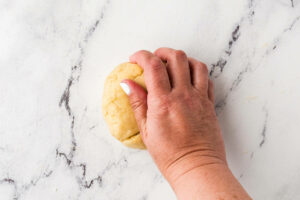
- If the dough is sticky, dust it lightly with flour. If it feels too dry and cracks as you knead, wet your hands and keep going until the moisture works in.
- Wrap tightly in plastic wrap and let rest at room temperature for at least 30 minutes to relax the gluten.
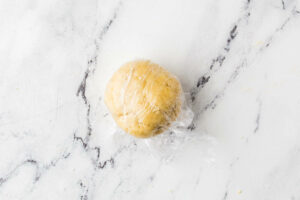
- Divide the dough into 2–3 pieces. Keep the pieces you’re not working with covered in plastic wrap so they don’t dry out.
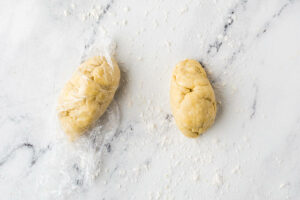
- Roll one piece into a thin sheet with a rolling pin or pasta machine, dusting with flour as needed to prevent sticking. If the dough keeps bouncing back or resists rolling, let it rest for 1–2 minutes to relax the gluten, then try again.
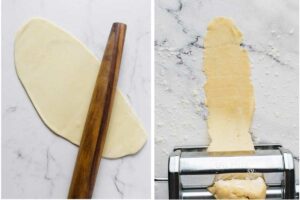
- Cut into your desired shape: tagliatelle (thin ribbons), pappardelle (wide ribbons), or rustic hand-cut strips.
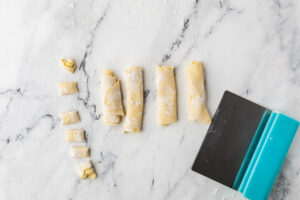
- Dust the cut noodles lightly with flour, then coil them into loose nests and set them on a floured tray while you roll and cut the remaining dough. For sturdier noodles, dust the cut pasta with flour or semolina and let it rest for 15–20 minutes before boiling.
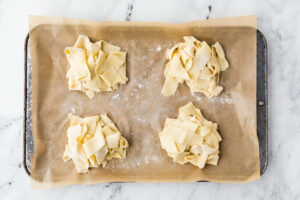
- Bring a large pot of salted water to a rolling boil. Add the pasta in small batches so the strands have room to move freely. Stir gently but continuously during the first 30–60 seconds to prevent sticking. Cook for 2–3 minutes, or until al dente. Fresh pasta cooks quickly, so keep an eye on it. Drain and toss immediately with your favorite sauce.
Notes
Nutrition
Nutrition information is automatically calculated, so should only be used as an approximation.
 Like this recipe? Rate & comment below!
Like this recipe? Rate & comment below!
